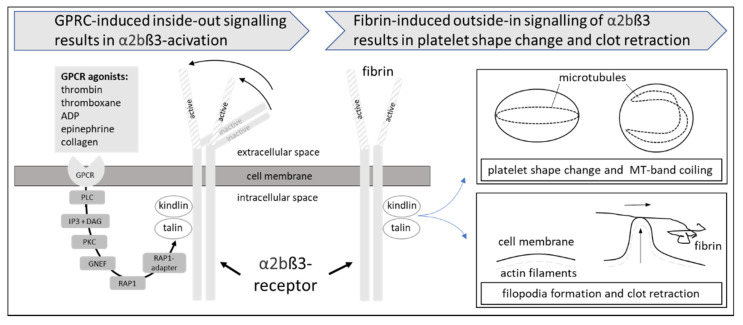Figure 1.
Inside-out and outside-in signaling of the platelet αIIbβ3-receptor. Inside-out signaling is defined as the activation of the extracellular part of the αIIbβ3-receptor induced by intracellular signal transduction events including G-protein coupled receptors (GPCR), phospholipase C (PLC) and the second messengers diacylglcerol (DAG) and inosittrisphosphate (IP3), protein kinase C (PKC), RAS-related protein 1 (RAP1), RAP1-adapter, talin, and kindlin. Outside-in signaling consists of fibrin-binding to the activated αIIbβ3 receptor, subsequent activation of complex intracellular signal transduction pathways (not shown), leading to a shape change induced by the microtubule system as well as filopodia formation and clot retraction induced by actin reorganization.

